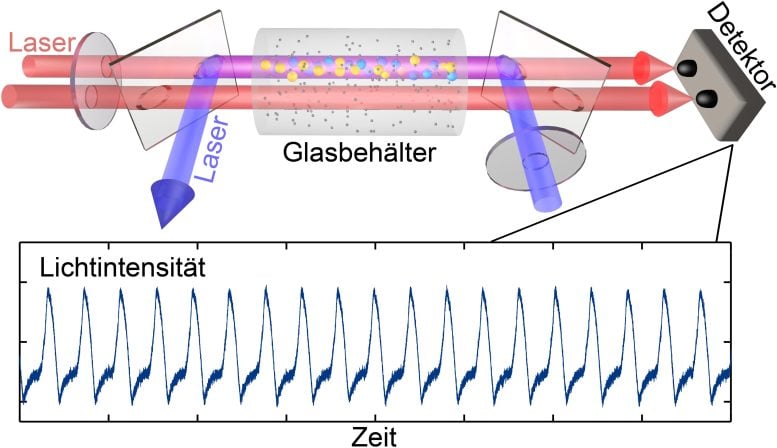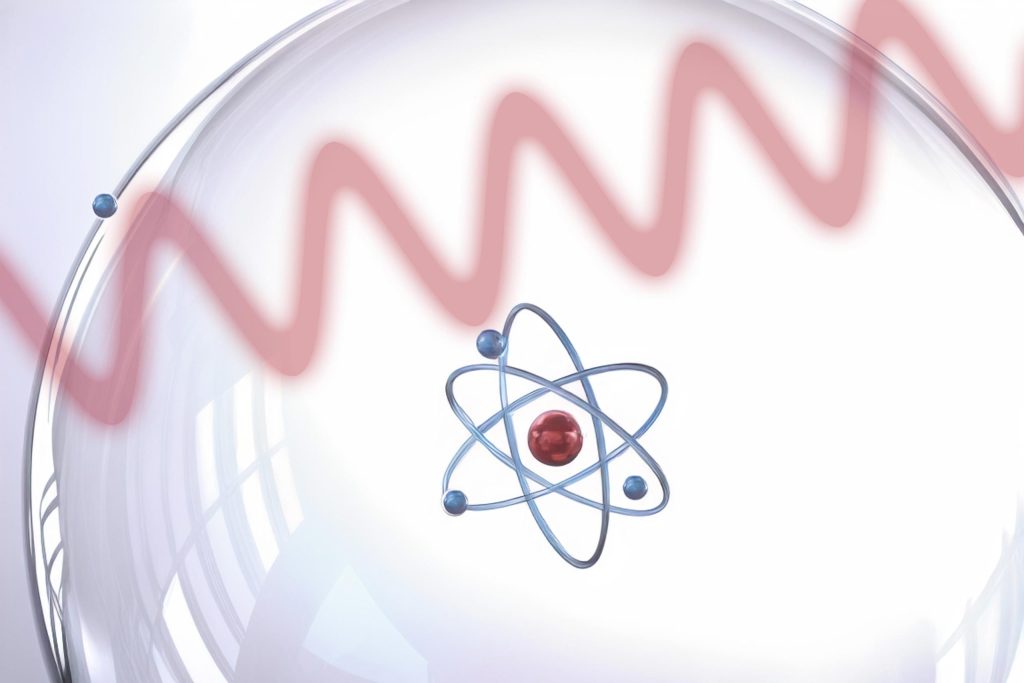The researchers have created a highly unusual state of matter, whose atoms are 100 times larger in diameter than normal.
Proposed by Nobel Prize winner Frank Wilczek in 2012, time crystals have been successfully created using Rydberg atoms and laser light at Tsinghua University in China, with theoretical support from the Vienna University of Technology in Austria. This new state of matter repeats not spatially like conventional crystals, but temporally, and exhibits spontaneous periodic rhythms even in the absence of external stimuli. This phenomenon is known as spontaneous symmetry breaking.
A crystal is an arrangement of atoms that repeats in space at regular intervals. At every point, the crystal looks exactly the same. In 2012, Nobel laureate Frank Wilczek posed the question: “Can time crystals also exist, that is, objects that repeat in time rather than space?” And can periodic rhythms emerge even when no specific rhythm is imposed on the system and interactions between particles are completely independent of time?
Frank Wilczek’s idea has generated a lot of controversy over the years. Some people believe that time crystals are impossible in principle, while others have tried to find a loophole and make them happen under certain special conditions. Now, researchers from China’s Tsinghua University, with support from Vienna University of Technology in Austria, have succeeded in creating a particularly fascinating kind of time crystal. The team used laser light and a very special kind of atom called Rydberg atoms, which are hundreds of times larger than normal atoms in diameter. Their results have now been published in the journal Nature. Natural Physics.
Spontaneous symmetry breaking
The ticking of a clock is also an example of a periodic motion in time. But it doesn’t happen naturally: Someone has to wind the clock and start it at a specific time. This start-up time determines when the ticking will occur. This is not the case with a time crystal. In Wilczek’s view, there is actually no physical difference between different points in time, but the periodicity should occur naturally.
“While the tick frequency is predetermined by the physical properties of the system, the time at which the ticks occur is completely random. This is known as spontaneous symmetry breaking,” explains Professor Thomas Pohl from the Institute for Theoretical Physics at the Vienna University of Technology.

A static system with a continuous light input generates a time-dependent periodic signal. Credit: TU Vienna
Thomas Paul, who worked at Tsinghua University in China on the theoretical part of the research that led to the discovery of time crystals, shone a laser light onto a glass container filled with a gas of rubidium atoms and measured the strength of the light signal that reached the other side of the container.
“This is actually a static experiment, no particular rhythm is imposed on the system,” says Thomas Paul. “The interaction of light with atoms is always the same, the intensity of the laser beam is constant. But to our surprise, we found that the intensity reaching the other side of the glass cell starts to oscillate in a very regular pattern.”
Giant Atoms
The key to the experiment was preparing the atoms in a special way. atom Electrons can orbit the nucleus in different orbits, depending on the energy they have. When energy is added to the outermost electron of an atom, it moves very far away from the nucleus. In extreme cases, it can move hundreds of times farther away than normal. This is how atoms with huge electron shells, so-called Rydberg atoms, are created.
“When atoms in a glass container are prepared in such a Rydberg state and their diameter becomes enormous, the forces between these atoms also become very large,” explains Thomas Pohl. “And that in turn changes the way the atoms interact with the laser. If we choose the laser light such that it can excite two different Rydberg states simultaneously in each atom, a feedback loop is created, leading to spontaneous oscillations between the two atomic states. This in turn also leads to oscillating light absorption.” The giant atoms beat a regular rhythm of their own, and this beat is translated into a rhythm in the intensity of the light that reaches the edge of the glass container.
“Here we have created a new system that provides a powerful platform for improving our understanding of time crystal phenomena in a way that is very close to Frank Wilczek’s original idea,” says Thomas Pohl. “Precise, self-sustained oscillations can be used for sensors, for example. Giant atoms with Rydberg states have already been successfully used for such technologies in other contexts.”
Reference: “Dissipative time crystals in a strongly interacting Rydberg gas” by Xiaoling Wu, Zhuqing Wang, Fan Yang, Ruochen Gao, Chao Liang, Meng Khoon Tey, Xiangliang Li, Thomas Pohl, and Li You, July 2, 2024, Natural Physics.
Publication date: 10.1038/s41567-024-02542-9


